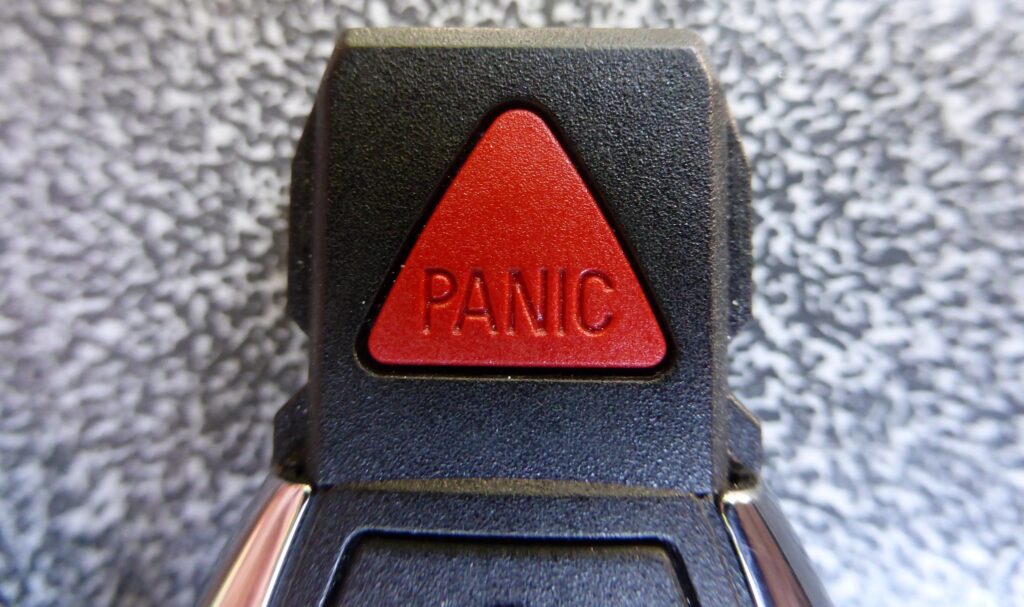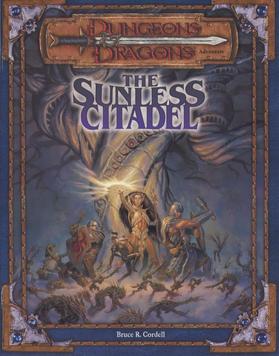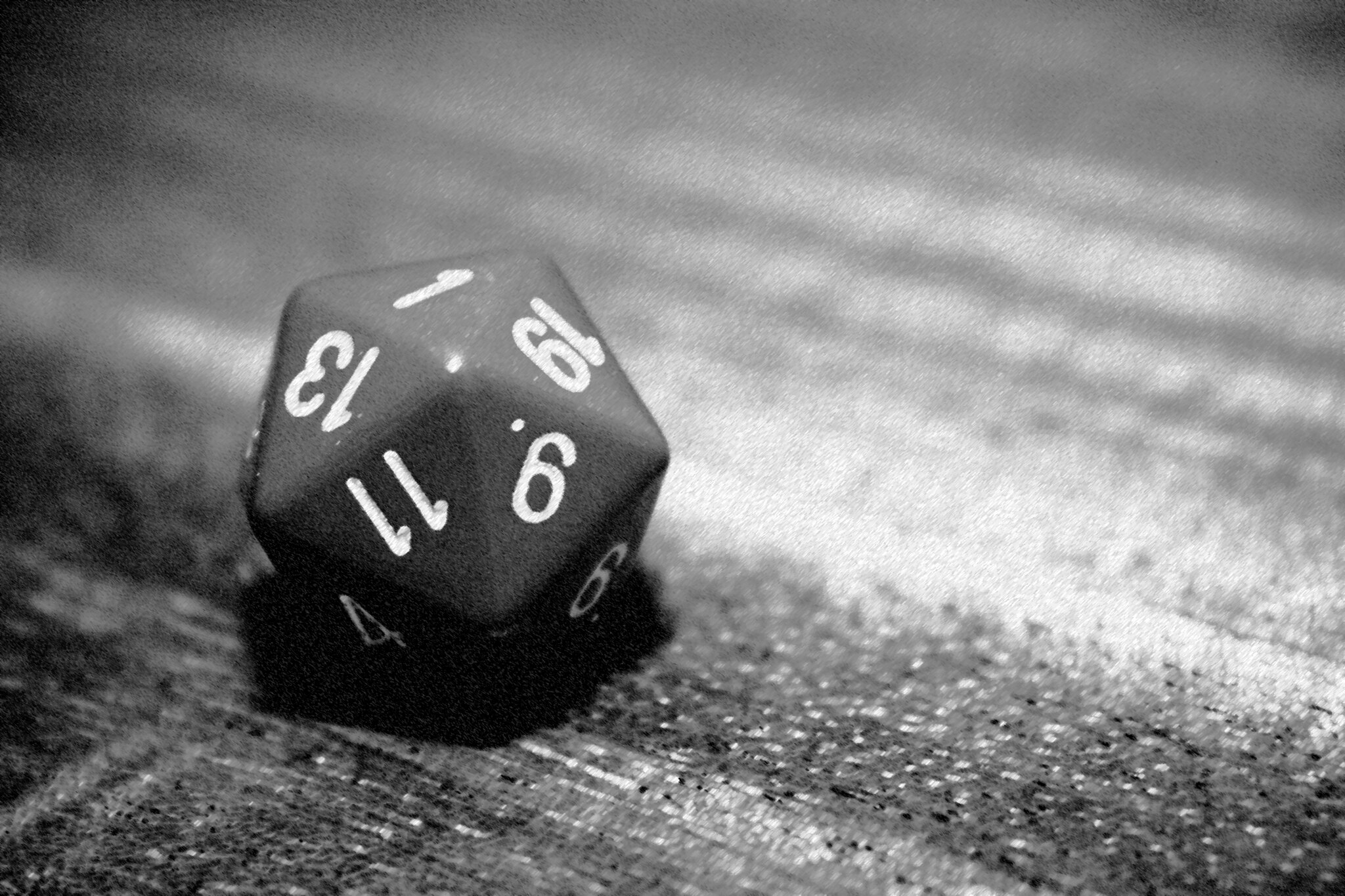In my first #wobblefit video, I mentioned that my first time running a game of Dungeons and Dragons didn’t go so well. In fact, it was a total critical fumble. I botched my saving throw against abject humiliation. I rolled a one on my Persuasion attempt to make my friends think I was cool. My campaign failed three death saves and croaked on the table.
Okay, no more dumb nerd puns, here’s the story:
I was a pimply 16 year old and one of my friends from high school invited me to play Dungeons and Dragons. I’d been curious about the game before, so this was really exciting. Back then, we were playing Dungeons and Dragons 3rd edition, which had just come out.

My first character was Keth, a loincloth-wearing wild elf barbarian who used a pair of tomahawks, decorated himself with handmade beads, and had a pet gecko named Geeb. He was a lot of fun, until he got tragically turned to stone by a basilisk in a TPK that ended our party in the second session.
I really liked playing Dungeons and Dragons as a player, but what I was really interested in was taking on the role of Dungeon Master.
I’d been worldbuilding and creating stories for a couple years, so the idea of creating and running the entire world in Dungeons and Dragons was really really cool!
I convinced the other players this was something I was ready to do.
I may or may not have exaggerated my skill level and preparedness a bit. I was the least experienced player at the game table — all the other players had played several times more than I had.
I asked them to give me three weeks to prepare.
Critical Fumble #1: Unfocused Worldbuilding
The first thing I decided was that I wasn’t going to use a published setting or adventure. Those things were for amateurs. I could design everything from scratch and that would give me total control over my game.
I spent the first two weeks investing hours of work into a fantasy world named Alagron, full of interesting deities, tons of evocative history, cool gimmicky features — the planet was shattered and there were huge floating landmasses! Magic worked different! The moon was fucked up!
The problem was that my worldbuilding was all over the place. I had half-finished notes on all these elements, but I had absolutely nothing for the local area where I actually planned to start the campaign.
And really, creating a basic village and a dungeon seemed so boring compared to the really interesting stuff I was doing with the big overview of the world. I just knew my players would be so excited once I showed them the world I was making.
The day before we played, I slapped together a villain and some cronies. Of course, I didn’t have any clue what they wanted, why the guy was evil — just that he was a bad guy that needed thwarting.
On Friday, I posted about how critical it is to focus your TTRPG worldbuilding on gameplay. That was advice I could have used when I was just starting out.
I had prepared a lot of cool stuff, but very little of it was actually playable. There were many interesting things I could tell my players about, but almost nothing for them to do.
Critical Fumble #2: Untested Homebrew

I decided I wanted my world to include a race of molefolk inspired by Mogu from the Breath of Fire on the SNES. Of course, there was no such race in the Player’s Handbook for Dungeons and Dragons 3rd edition, so I had to make something up.
I decided I’d give them bonuses to Strength and Constitution AND extra HP, darkvision better than anyone else (because they’re moles, right?), big claws that did a whopping 2d6 damage, a burrow speed, and no downsides, because downsides suck, right?
I didn’t understand the rules and the game balance enough to know that this was a powerful race much stronger than the core races provided in the Player’s Handbook. Only one of my players played a molefolk.
When it came time for the party to fight my half-assed villain and his cronies, that one player absolutely wrecked the enemies, using his burrow speed to attack them from beneath the ground, one-shotting most of the ones he hit.
I’d also invented a couple of Super Duper Cool™ spells for the party wizard, again with zero concept of how strong 1st level spells should be.
Critical Fumble #3: Unrealistic Expectations

I had spent three weeks of solid work preparing for this session. Surely, somehow, all that work meant I’d have several sessions worth of adventure for my players to explore. I had no basis of comparison or experience to tell me how long a session should be or how long certain actions take.
My players finished my prepared content in about 5 minutes.
With a poorly planned encounter and overpowered homebrew, my players wrecked the villain and his cronies in about two rounds. And I hadn’t actually planned anything for the players to do after that fight.
No big deal, right? Just improv the rest of the session. It’s something I do all the time now if the game goes off kilter and into territory I hadn’t prepared for.
Except that first time, I completely froze up.
My heart was beating in my chest. My brain was static. I had this overwhelming realization that I was way over my head and all my plans were crashing and burning.
One of my friends asked if I was okay, and I mumbled that they had finished everything I had prepared and that I didn’t know what to do.
“That’s it?” one of them asked. Everybody looked disappointed.
I felt like a piece of shit who had let his whole group of friends down.
We ended up ditching D&D and playing Soul Calibur 2 for the rest of the night.
🎵 I Get Knocked Down, But I Get Up Again 🎵
I could have let that be the end of my career as a TTRPG Dungeon Master.
The next day, one of my friends, who had more experience as a Dungeon Master, sat down with me and we talked through everything that went wrong.
He suggested I try again with a published adventure. We picked out The Sunless Citadel, a cool adventure by Bruce Cordell about a buried castle, an evil tree, and a sinister druid. The adventure has since been updated to 5th edition in Tales of the Yawning Portal.

A week after my first failure as a Dungeon Master, I ran my first session of The Sunless Citadel. I stuck to core rules.
The first session went great. We played every week for months, progressing into new adventures when my party completed that one.
Even in a published adventure, I still found places where I could express my creativity and inject small changes. I had to make rulings when my players came up with situations the adventure designers didn’t account for.
Eventually when I was more experienced, I started running more freeform adventures and started experimenting with sandbox play.
I’ve now been DMing Dungeons and Dragons and other tabletop RPGs for more than 20 years.
What Other DMs Are Saying
I’m not the only DM that had a rough first experience. I reached out to my Bluesky followers and asked about their first experience.
Here’s what they had to say:
Three Ways To Reroll Your Critical Fumbles
I made three big mistakes in planning my first session:
- Unfocused worldbuilding
- Untested homebrew
- Unrealistic expectations
If I could go back and plan that first session all over again, here’s how I’d do it:
Published Adventure OR Tight, Playable Worldbuilding
If I didn’t have much experience as a player, I’d stick to a published adventure. Plenty of talented DMs have begun learning D&D in the DM seat, and that’s perfectly valid — it’s a job that someone at the table needs to do, after all.
A published adventure lets you focus on learning the system and how to manage a table full of players, while leaving the worldbuilding, adventure pacing, and balance to more experienced creators.
In my case, I didn’t know the rules very well when I first started DMing. If you do know the rules pretty well and want to do some worldbuilding for your first campaign, keep it simple and keep it local.
- Start with a small village.
- Add something nearby to explore: an old tomb, a crumbling castle, a cult temple, dark caverns, whatever.
- Flesh out a handful of NPCs in town to interact with. You don’t have to make every NPC in town a star. Just give them a couple personality traits.
- Figure out a hook to draw the party into the explorable thing — kidnapped villagers, stolen goods, strange noises and lights that need investigating, whatever.
Don’t get bogged down in large world-scale worldbuilding. While complex pantheons, long recorded histories, strange geographies or magic systems are interesting and unique components of fantasy worlds, it takes a lot of work and testing to forge them into something playable.
Honestly, many first campaigns don’t last that long anyway. Look at your first campaign, or maybe even your first few, as a trial run for the big epic campaign you want to run in the future. You may even decide to start with a one-shot or limited-run campaign that intentionally only plays for a few sessions.
Save The Homebrew For Later
Honestly, if you’re new to Dungeons and Dragons, I would strongly recommend you hold off on homebrewing anything that touches game mechanics until you understand the game better.
That includes races, classes, spells, magic items, monsters, etc.
Whatever edition of the game you decide to play, there are plenty of playable options in all of these categories to start with.
Homebrew is game design. It requires an understanding of how the game works, why it works, and how to balance your creation against the core options the game offers.
And homebrew requires careful playtesting, so you can understand all the greasy gunky fiddly bits where it chafes against the way the game is intended to work.
I know you’re excited to start creating things, but lets slow it down. Learn to walk before you accidentally create a race-class-spell-item combination that allows a turtle to run at Mach 12.
You can do homebrew when you graduate from Dungeon Mastering 101.
If I was planning that first session again, I would stick to the three core rulebooks only. The Player’s Handbook, Dungeon Master’s Guide, and Monster Manual have everything you need to have tons of fantastic adventures.
Reign In Your Expectations
Finally, I wouldn’t go into my first campaign with huge expectations that it was going to be the best game ever or that it would impress players more experienced than myself.
I would have told myself to recognize that my first game was probably going to be rocky, that I needed to ask for help from more experienced players and DMs, and remind myself it was okay to make mistakes or make a bad ruling.
I would have focused less on doing something grandiose and spectacular and focused instead on one thing:
Simple, easy fun.


